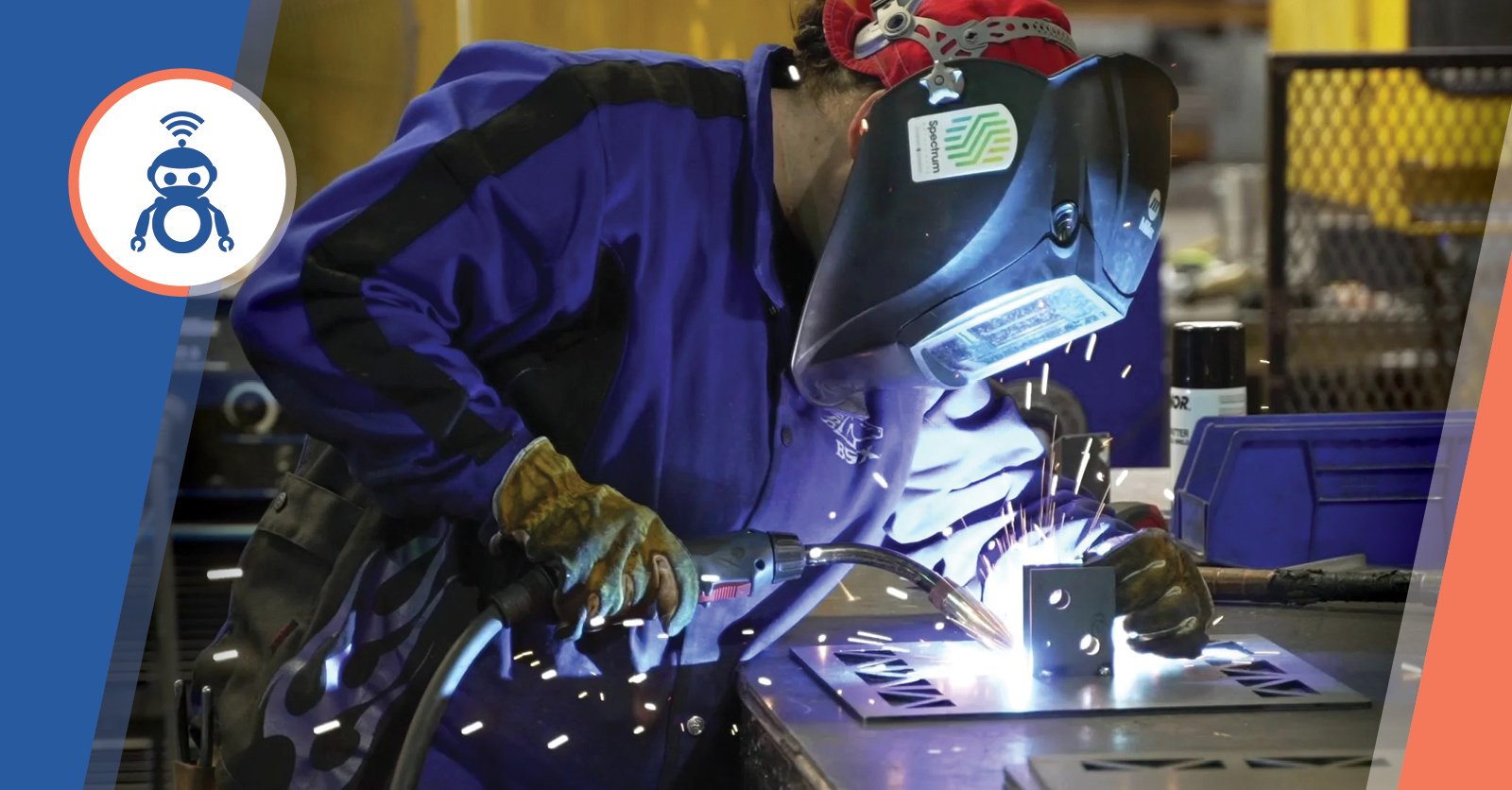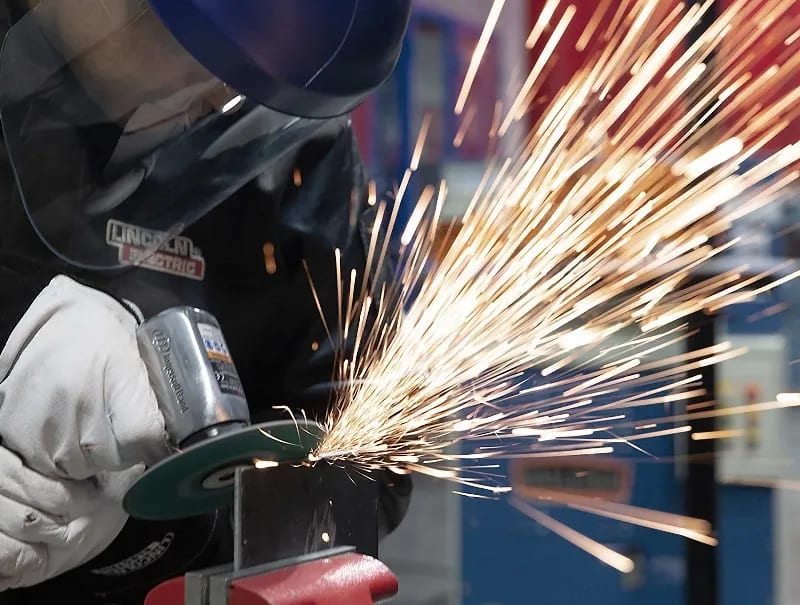Typical Welding Repair Service Issues and Just How to Address Them Properly
Welding repair services commonly run into a variety of issues that can endanger the stability of the end product. Typical problems include inadequate infiltration, porosity, and imbalance, to name a few. Each problem provides distinct challenges that require particular techniques for resolution. Comprehending these problems is important for welders intending to improve their results and abilities. This discussion will certainly discover these common welding repair work concerns and efficient methods to resolve them.
Insufficient Penetration
Inadequate penetration happens when the weld steel stops working to completely fuse with the base product, resulting in weak joints and prospective structural failures. This problem often stems from not enough warm input, incorrect electrode angle, or incorrect welding rate. Welders may encounter poor infiltration as a result of a mistake of the essential parameters for a certain product density or kind. Additionally, contamination on the base material's surface can hinder effective bonding, intensifying the trouble. To deal with insufficient infiltration, welders ought to guarantee suitable setups on their tools and preserve a clean job surface area. Regular assessment of welds is recommended to recognize any type of shortages early, allowing for timely improvements and the prevention of compromised structural honesty in welded settings up.
Porosity
Porosity is a typical issue in welded joints that materializes as small gas bubbles entraped within the weld steel. This problem can compromise the integrity of the weld, causing lowered stamina and possible failure under stress and anxiety. Montana Mobile Welding and Repair Belgrade Fabrication. Porosity usually arises from contamination, moisture, or inappropriate welding methods, which allow gases to leave into the molten weld pool. To deal with porosity, welders need to assure correct surface preparation, preserve a tidy functioning atmosphere, and utilize ideal welding parameters. In addition, choosing the right filler product and securing gas can alleviate gas entrapment. Regular examination and screening of welds can aid recognize porosity early, guaranteeing prompt restorative activities are taken, therefore preserving the quality and integrity of the bonded structure
Imbalance
Imbalance in welding can arise from numerous factors, including improper setup and thermal expansion. Comprehending the root causes is essential for effective resolution. Numerous modification strategies are offered to straighten components and guarantee structural integrity.
Reasons of Misalignment
Welding misalignment frequently comes from a range of underlying concerns that can endanger structural integrity. One main cause is improper fit-up of components prior to welding, which can cause gaps and irregular surface areas. Variants in thermal growth throughout the welding procedure can likewise cause distortion, especially if the products being signed up with have different coefficients of expansion. Furthermore, insufficient securing and fixturing may fail to hold parts firmly in area, causing movement during welding. Inadequately maintained devices, consisting of welding equipments and devices, might introduce disparities in the weld grain, further adding to imbalance. Driver error, stemming from inadequate training or experience, can additionally play a substantial role in producing misaligned welds.

Adjustment Strategies Readily Available
Resolving imbalance efficiently requires a mix of corrective methods customized to the details concerns available. One common technique is the use of jigs or fixtures to hold parts in the right placement during welding, making sure consistent placement. Furthermore, preheating the products can assist reduce distortion and enhance fit-up. For considerable misalignment, mechanical realignment strategies, such as making use of hydraulic jacks or clamps, can be utilized to correct the setting before welding. Post-weld warmth therapy may likewise be necessary to relieve tensions triggered by misalignment. Mindful evaluation and modification throughout the setup phase can prevent misalignment issues from becoming significant issues, advertising a smoother welding process and enhancing general architectural integrity.
Distortion
Distortion is a common challenge in welding that can occur from numerous elements, including irregular heating & cooling. Recognizing the causes of distortion is necessary for carrying out efficient prevention strategies. Addressing this issue not just enhances architectural integrity but additionally enhances the total high quality of the weld.
Root causes of Distortion
When subjected to the intense warmth of welding, materials frequently undergo changes that can result in distortion. This phenomenon mostly develops from thermal expansion and tightening during the welding process. As the weld area warms up, the material broadens; upon air conditioning, it acquires, which can create internal anxieties. Additionally, unequal home heating across a work surface can intensify these tensions, causing bending or bending. The sort of material also plays a significant function; steels with differing thermal conductivity and coefficients of development might respond in different ways, causing unforeseeable distortions. Poor joint layout and inadequate fixturing can contribute to imbalance during welding, increasing the likelihood of distortion. Understanding these causes is vital for reliable welding fixing and avoidance methods.
Prevention Techniques
Reliable prevention methods for distortion during welding concentrate on regulating warm input and making sure appropriate joint design. Preserving a consistent warm input helps to reduce thermal development and tightening, which can bring about distortion. Using methods such as pre-heating the workpiece can additionally lower the temperature gradient, advertising uniform go to these guys home heating. Furthermore, picking appropriate joint designs, such as T-joints or lap joints, can boost security and minimize anxiety concentrations. Implementing proper fixturing to protect the workpieces in location better aids in keeping alignment throughout the welding process. Ultimately, staggered welding series can distribute heat much more equally, stopping localized distortion. By applying these strategies, welders can greatly reduce the probability of distortion and enhance the total top quality of their welds.
Splitting
Cracking is an usual issue run into in welding repair work, commonly arising from different variables such as incorrect air conditioning prices, material choice, or insufficient joint preparation. The occurrence of fractures can substantially jeopardize the stability of the weld, leading to prospective failings during procedure. To address this problem, welders must initially examine the origin, guaranteeing that products are suitable and appropriately selected for the specific application. Furthermore, controlling the cooling price during the welding procedure is necessary; rapid cooling can cause anxiety and lead to cracking. Appropriate joint layout and preparation likewise add to lessening the risk. Executing these strategies can improve weld top quality and toughness, eventually reducing the likelihood of cracking in completed weldments.

Incomplete Combination
A considerable problem in welding repair services is insufficient fusion, which takes place when the weld steel does not adequately bond with the base material or previous weld passes - Montana Mobile Welding and Repair Belgrade Welding. This defect can bring about weak points in the joint, potentially endangering the integrity of the welded framework. Aspects adding to insufficient fusion consist of insufficient warmth input, incorrect welding strategy, and contamination of the surfaces being joined. To resolve this concern effectively, welders ought to guarantee appropriate pre-weld cleansing and surface area preparation, as well as adjust their welding criteria to accomplish adequate infiltration and combination. Normal evaluation during the welding procedure can likewise help identify incomplete blend early, permitting timely corrective procedures to boost the overall top quality of the weld
Overheating
While welding repairs can mig welding stainless steel with argon enhance structural integrity, overheating provides a significant challenge that can result in product degradation. Excessive heat throughout welding can alter the mechanical properties of metals, leading to reduced stamina, boosted brittleness, and warping. This phenomenon is especially vital in high-stress applications where structural integrity is critical. Identifying overheating can involve aesthetic assessments for staining or distortion, in addition to keeping track of temperature during the welding process. To mitigate the dangers related to getting too hot, welders must use proper methods, such as controlling warmth input, adjusting travel rate, and making use of appropriate filler materials. In addition, executing pre- and post-weld warm therapies can assist restore product buildings and boost the total top quality of the repair, guaranteeing long-lasting efficiency and security.
Regularly Asked Inquiries
What Are the Typical Indications of a Welding Defect?

Just How Can I Check My Welds for High quality?
To examine welds for top quality, one can utilize visual evaluations, ultrasonic screening, and radiographic techniques. Each strategy assures architectural stability, recognizes issues, and confirms adherence to defined standards, eventually improving the reliability of the bonded joints.
What Security Safety Measures Should I Take While Welding?
When welding, one need to focus on safety and security by wearing appropriate individual protective tools, ensuring proper ventilation, safeguarding combustible products i thought about this away, maintaining a clean work area, and understanding surroundings to avoid injuries and mishaps.
Can I Fix a Weld Without Redesigning the Entire Joint?
Repairing a weld without redesigning the entire joint is possible, depending upon the damage (Welding). Strategies such as grinding, including filler product, or making use of a welding procedure can successfully address certain imperfections while protecting the surrounding structure
What Equipment Are Vital for Efficient Welding Repair Works?
Important tools for efficient welding repair services consist of a welding maker, cable brush, mill, safety equipment, clamps, and filler products. Each tool plays an essential role in making certain quality and security throughout the repair service process. Porosity commonly arises from contamination, moisture, or incorrect welding methods, which enable gases to get away right into the molten weld pool. Poorly maintained equipment, including welding equipments and devices, might present incongruities in the weld grain, further contributing to misalignment. When subjected to the extreme heat of welding, products often undertake modifications that can lead to distortion. Fracturing is a typical issue experienced in welding repair services, often resulting from different aspects such as inappropriate cooling rates, material option, or poor joint preparation. A substantial problem in welding repair services is incomplete blend, which happens when the weld metal does not sufficiently bond with the base product or previous weld passes.